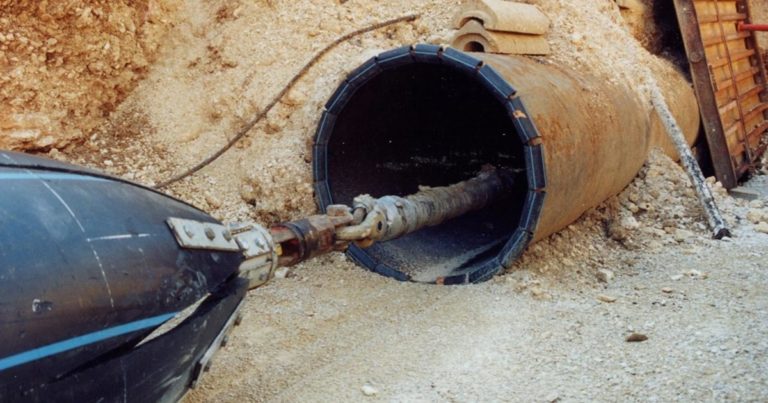The use of plastic materials in the design of drinking water, industrial water and sanitation networks is becoming increasingly prevalent. This spectacular growth is thanks to the growing understanding of materials, not only in theoretical terms, but also from the practical experience gleaned. Plastics also have a better quality-price ratio than conventional materials.
It is against this backdrop that High Density Polyethylene (HDPE) has become the norm when designing and implementing drinking water networks.
The proven qualities of HDPE pipes such as being highly chemically inert, imperishable, non-rusting, non-pitting and non-corroding, make it the material of choice for trenchless pipelaying.
In addition, HDPE withstands abrasion better than conventional pipes and is especially ductile, allowing it to absorb the stresses caused by ground movements (fill zones, unstable ground, seismic areas, etc.) and its flexibility allows it to be bent to accommodate challenging pipe routes.
Moreover, it is unlikely to suffer impact breakage or crack propagation under normal conditions of use. The ability of HDPE pipes to withstand water hammer effects is far superior to traditional materials and as a result, the longevity of the network is improved.
Finally, as HDPE possesses self-anchoring properties, fewer anchoring points are needed, so the pipeline can be laid more quickly.
Because of all these advantages, Axeo, a subsidiary of Lyonnaise des Eaux France, regularly use HDPE as it is perfect for trenchless pipe laying, whether carried out by sleeve drilling or destructive replacement.
Axeo specialises in two types of trenchless operation in which HDPE solutions are used:
1. Sleeved drilling with or without annular vacuum (Subline or Rolldown process):
The principal involves inserting an HDPE pipe into an existing pipe. The pipes are either welded and assembled outside the excavation while awaiting insertion or as the drawing operation progresses.
The pipe trains are inserted into an insertion pit and pulled through by a winch located at the other end (known as the reception pit). The pipes to be laid are joined together by butt welding, each section being 12 or 13 m long. It is standard practice to remove external burrs.
The main advantages of sleeved drilling techniques are the following:
- reduced amount of earthworks at the insertion and reception pits
- longer lengths can be handled
- the internal and external stresses are accommodated
- the end result is as good as installing a new pipe
2. Destructive replacement of existing pipework with an HDPE pipe:
Destructive replacement is a solution for replacing pipelines that does not require the trench to be opened.
The principal involves destroying existing underground pipes made of grey cast iron, asbestos cement, PVC or unreinforced concrete and inserting the new HDPE pipework at the same time and in the same place.
The main advantages of this technique are the following:
- reduced amount of earthworks at the insertion and reception pits
- refurbishment with a new pipe
- increased pipe diameter where necessary
- the internal and external stresses are accommodated
- reduced working area footprint
The reliability and specific properties of HDPE pipes allow companies such as Axeo to offer technical solutions that are especially well-suited to even the most difficult and challenging situations.
Written by Guillaume Orlhac in collaboration with Catherine Eloy-Giorni
